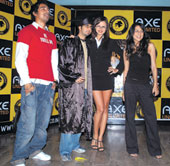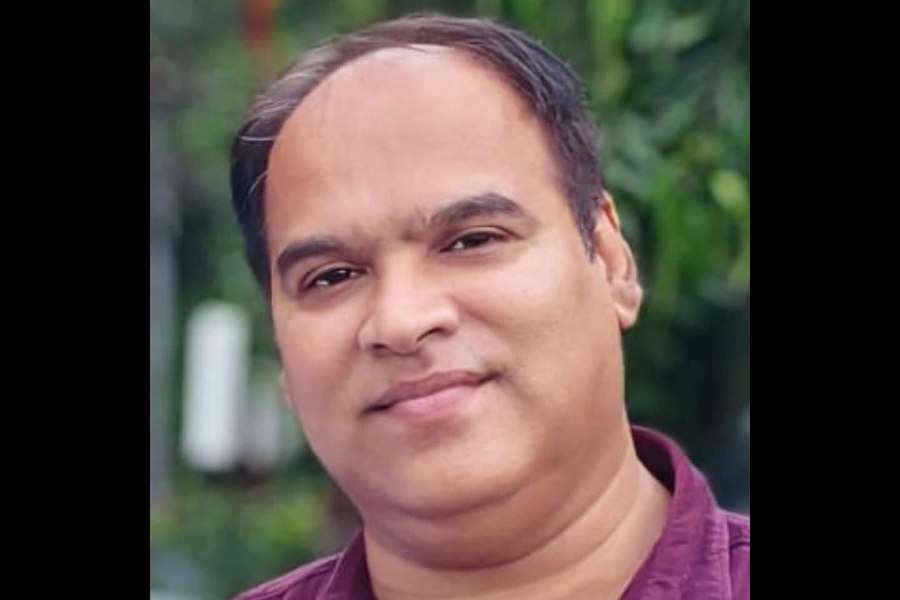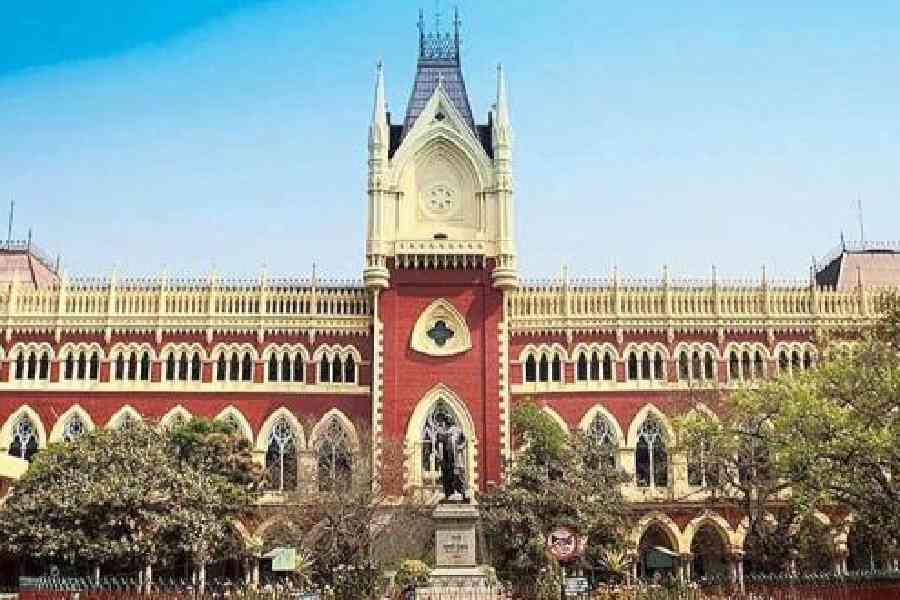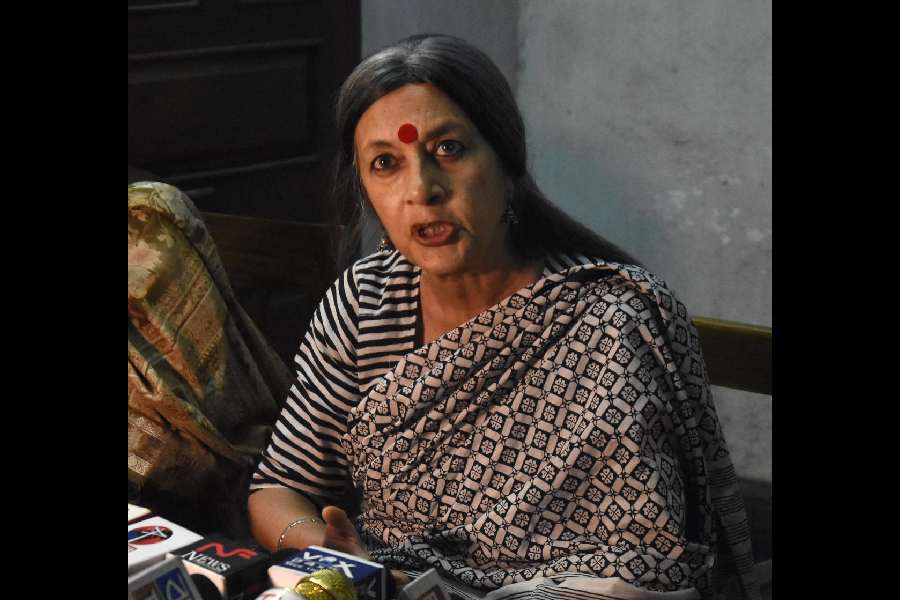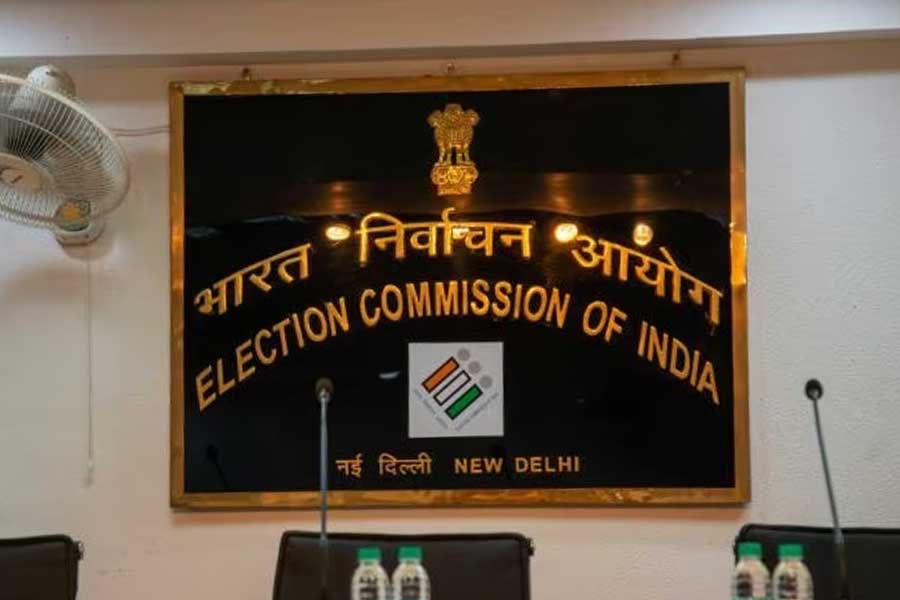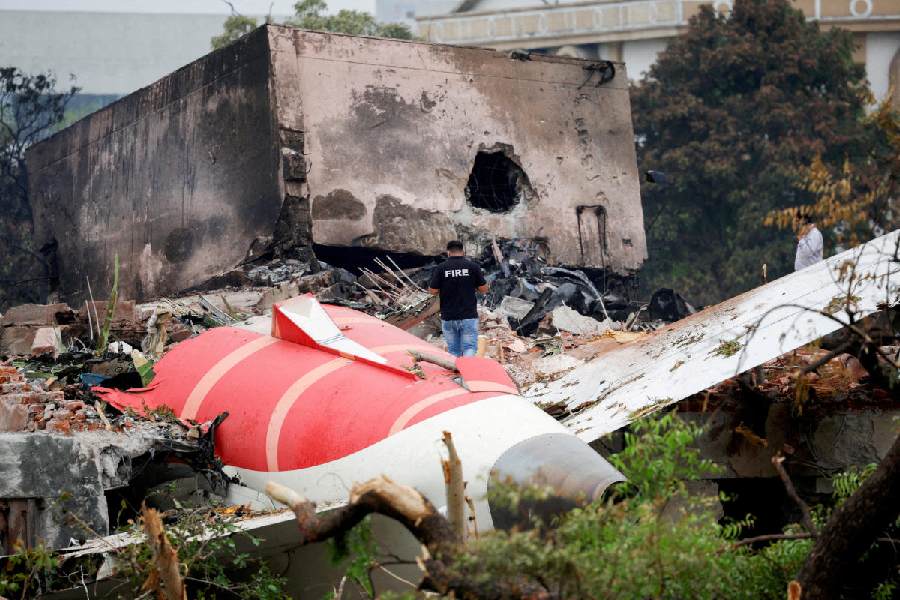 |
| VJ Ranvijay, Sunny, an Axe Academy student, Dean Roxanne Robinson and VJ Anusha (left to right) at the launch party of Axe’s new fragrance |
So fragrances have always sold on the sensuous plank, what’s new about that, you’ll say. Well, how about moving from selling perfume to starting a virtual university of seduction? Yes, you heard right! In an unusual do in Mumbai recently, HLL Deodorants, a division of Hindustan Lever Ltd. (HLL), unveiled just that ? its Axe Unlimited Academy of (Smoothly) Applied Art. What it was really launching though, was its new Axe Unlimited fragrance ? albeit the online university of seduction exists alright (check out www.axeunlimited.co.in with its classes in shycology, hottieculture and kissics). So there it was, not only a marketing campaign that broke through the clutter, but an event that did so too.
At the event, you had MTV veejays Anusha and Ranvijay grilling an Axe Unlimited Academy fresher and Roxanne Robinson, the so-called dean of the virtual university, passing on tips to him on yes, how to get fresh with women. And instead of the Page 3 ensemble, you had youngsters (or students, if you will) who’d actually registered on the online university of seduction ? a bunch of 16 to 20-year-olds ? getting into the groove of things. Before they hit the dance floor though, Vikram Sakhuja, managing director, Mindshare, gave them some tips on how to break through the clutter (the advertising one, that is) while Milind Walvatkar, HLL Deodorants’ marketing manager, educated them on Axe Limited’s woody tones besides coaxing them to get a BA or Babe Attractor degree on the net.
 |
 |
 |
| (From top to bottom): Jairam Ramesh and Kavery Nambisan at the release of The Hills of Angheri; artist Satish Gujral admires the paintings at the Art Alive show and Humaira Abid with one of her pieces |
The hills are alive...
Dr Kavery Nambisan is clear about why she writes: to communicate. “You write because you want to be heard by somebody. If not, you might as well confine yourself to writing diaries,” said Nambisan whose latest offering is a work of fiction titled The Hills of Angheri. The paperback volume published by Penguin India, was released recently at Delhi’s India Habitat Centre by politician Jairam Ramesh. A book reading by the author and her husband, litterateur Vijay Nambisan followed.
Priced at Rs 350, the book is about a 12-year-old girl, Nalli who remembers the guardians of her village of Angheri asking her to do something with her life. She has an unusual dream for a girl in a traditional society: she wants to be a doctor. After all, how else will she stand by Jai ? her friend and hero ? when he returns as a qualified surgeon to start Angheri’s very own hospital?
Resisting the objections her family raises, Nalli travels from Karnataka to Madras and then to London to study, and experiences a world she’d never imagined. Yet, for all her adventures, Nalli yearns constantly for a glimpse of Angheri’s hills.
The book has autobiographical elements of course. But as Ramesh points out, there is another level to it ? one that addresses the age-old issue of developing rural India. “Young people love idealism, to develop the areas in which they grew up. And in this book, the larger sociological theme subconsciously stares you in the face,” he said.
With three decades of experience as a surgeon to her credit, Nambisan took up writing in 1980. Even though she was in charge of the Rural India Health Project Hospital in Coorg, Karnataka, she has authored several novels like The Truth about Bharat, The Scent of Pepper, Her Mango-Coloured Fish and On Wings of Butterflies.
Unity through art
In recent times, music and films have played a major role in bringing together performers from both India and Pakistan. Now it’s time for art to play its part. Recently, eight miniature artists from across the border and eight Indian artists hailing from the north-west of the country exhibited their work at Delhi’s Art Alive Gallery. Artist Humaira Abid curated the Pakistani works while the Indian ones were curated by Sushma Bahl.
Among the Pakistani artists were names like Ahsan Jamal, Ayesha Durrani, Habiba Khan, Hajrah Yousaf Khan, Farheen Maqsood, Muhammad Zeeshan, Saira Sheikh and Humaira Abid herself. However only Abid made it to the exhibition from among the eight. “The concept took shape when I visited the Gadhi village in Delhi about a year back. I met Sushma Bahl and we kept in touch. It took a few months to come up with the exhibition,” said Abid who showed off irons sculpted out of wood with paintings of women on them. “I made an association between istree (iron) and stree (woman),” smiled the artist.
Perhaps the most interesting aspect that emerges from the work of the Pakistani artists is their portrayal of women. They are shown not holding back but letting go. “I was very happy to see it in their paintings. It’s all about the woman not giving in to the restraints of society,” said Bahl.
Representing the Indian side were Nayanaa Kanodia, Shahid Parvez, Shanti Dave, Damodar Lal Gujrar, Shail Choyal, Vinay Sharma, Viren Tanwar and Yugalkishor Sharma. Also present on the occasion were artists Viren Tanwar, Damodar Lal Gujrar, Jatin Das and Intach convenor P Jain.
Delhi photographs by Rupinder Sharma and Ramakant Kuswaha

